SAP Implementation Cost 2025: Key Savings Strategies
SAP implementation costs vary widely. A small business might spend $500,000, while a large enterprise could exceed $10 million. The final cost depends on factors like business size, customization needs, and deployment type (cloud or on-premise).
Many companies focus on licensing fees, but that’s only part of the budget. Data migration, training, and customization often cost more than expected. If your business processes don’t align with SAP’s standard setup, custom development can double the costs.
Cloud vs. on-premise is another big factor. Cloud-based SAP has lower upfront costs but requires ongoing subscriptions. On-premise SAP definitely has higher initial costs but can be cheaper over a long period of time.
Software is only one component. Beyond software, you will need to pay for implementation partners, testing, and ongoing support. A well defined budget with clear milestones and contingency funds can help avoid cost overspends. Skipping planning leads to expensive surprises.
Being an ERP Consultant, I created my version of the SAP Implementation Cost Calculator. This calculator will help you to determine potential SAP costs for your business.
In the next sections, we’ll break down every cost component, compare cloud vs. on-premise pricing, and give practical tips to keep your SAP implementation on budget. Keep reading to make informed decisions and avoid costly mistakes.

Key Takeaways around SAP Implementation Costs
- Licensing is just one piece of the cost – Expenses like data migration, training, and support often take a bigger chunk of the budget.
- Cloud vs. On-Premise – Cloud has lower upfront costs but comes with recurring fees. On-premise requires more investment upfront but provides long-term cost control.
- Customization can get expensive fast – The more you tweak SAP, the more it costs. Sticking to SAP’s standard functionalities keeps expenses down and upgrades easier.
- Hidden costs add up – Third-party integrations, productivity loss, and compliance requirements can sneak up on you.
- Always have a backup budget – Adding 10-20% extra to your budget helps cover unexpected costs.
- Scope creep can wreck your budget – Keep costs in check with clear goals, strict change control, and regular tracking.
- Your SAP partner matters – The right team reduces mistakes and makes implementation smoother.
- Skipping training is a mistake – Well-trained employees use SAP more efficiently and rely less on costly external support.
- Don’t overpay for SAP – Most businesses spend more than they should. An expert advisor can help cut unnecessary costs and structure contracts wisely.
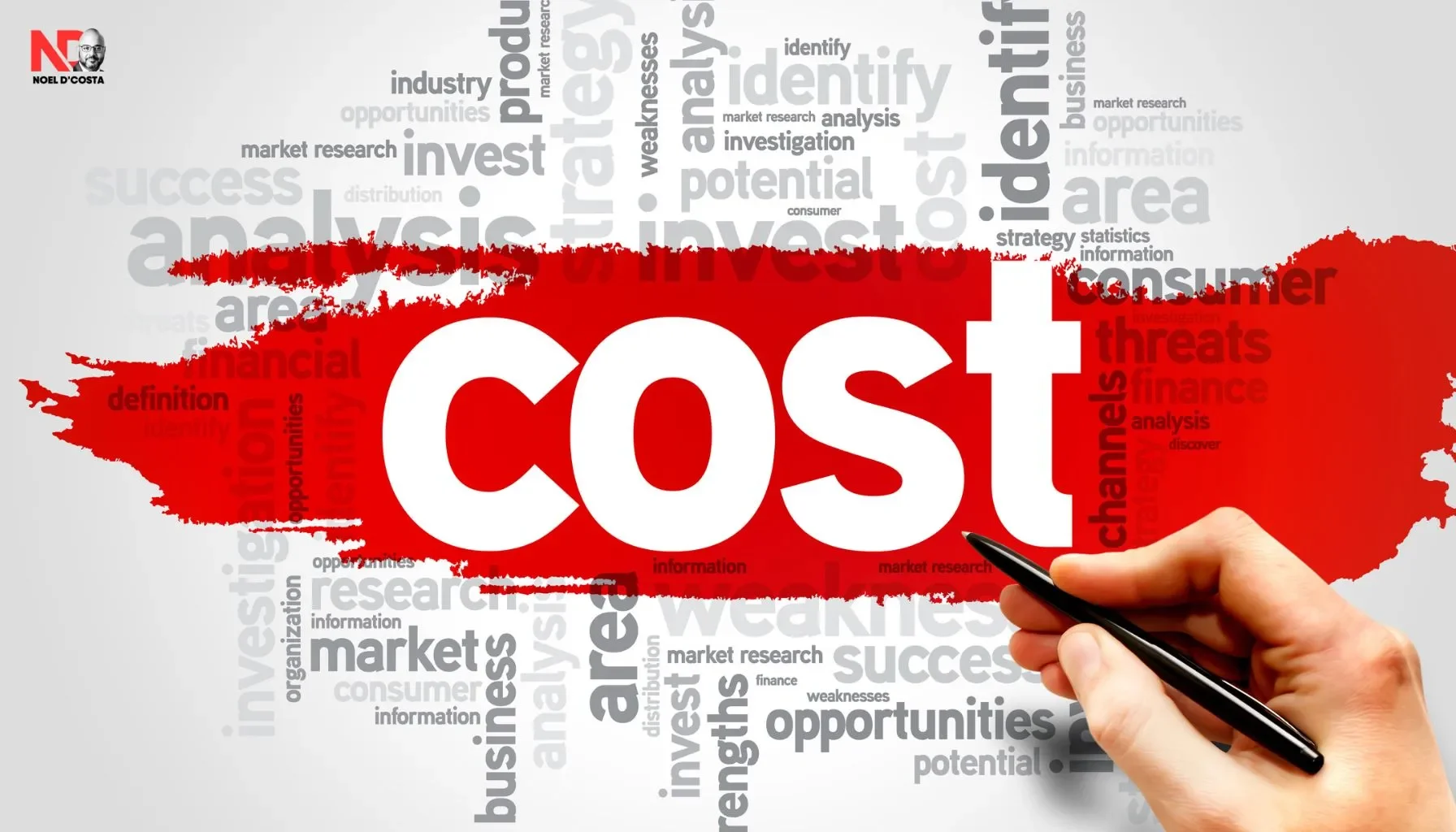
Related Topics of Interest
1. What Drives SAP Implementation Costs?
From my experience, SAP implementation costs depend on multiple factors. Each one can significantly impact the budget.
For SAP Implementation in public sector projects, the challenge isn’t just cost—it’s compliance, data integration, and change management. Without careful planning, costs spiral fast.
1. Licensing Fees
- Cloud vs. On-Premise – Cloud subscriptions look affordable at first, but long-term costs add up. On-premise requires a larger upfront investment but gives more control over expenses.
- SAP RISE vs. Traditional On-Premise – If you’re using SAP RISE, the pricing model is different from a fully owned on-premise system.
2. Implementation Partner & Consulting Charges
- Costs depend on the partner’s experience (Tier 1, Tier 2, or Tier 3). If you are looking for a SAP Implementation partner in the US, I have detailed out some important aspects for you, to consider before selecting your potential implementation partner.
- Poor planning increases consulting fees—unclear goals lead to scope creep and extra billable hours.
3. Customization & Development Costs
- More customization means higher costs—not just now, but during future upgrades. A retail company in the Middle East had 40% of their implementation customized. When it was time to move to S/4HANA, they couldn’t do an upgrade – they had to do a full fledged implementation.
- Stick to SAP’s standard functionalities when possible. Too many changes = higher maintenance fees.
4. Data Migration Expenses
- Data migration is often underestimated—cleaning, mapping, and transferring data takes time and resources.
- If you want to migrate historical transactional data? Expect higher costs. Public sector requires at least 7 years of historical data. Therefore, you need to factor historical information across all modules when considering your costs.
- If your vendor handles migration, costs increase significantly. Use my Data Migration Objects and Effort Estimator to understand data migration timelines and cost.
5. Training & Change Management
- Skipping training leads to Post-go-live Confusion—invest in structured training to ensure smooth adoption. Your training strategy needs to focus on ADOPTION, rather than just training.
- Resistance to change impacts ROI—if employees aren’t on board, productivity drops.
6. Ongoing Support & Maintenance
- Updates, patches, and support contracts aren’t free—budget for recurring costs.
- Ignoring maintenance leads to performance issues and higher expenses later.
So as you can see, SAP projects aren’t just about software costs. If you’re not careful, hidden expenses can quickly add up. If you want to avoid sudden cost budget surprises, plan for these factors upfront.
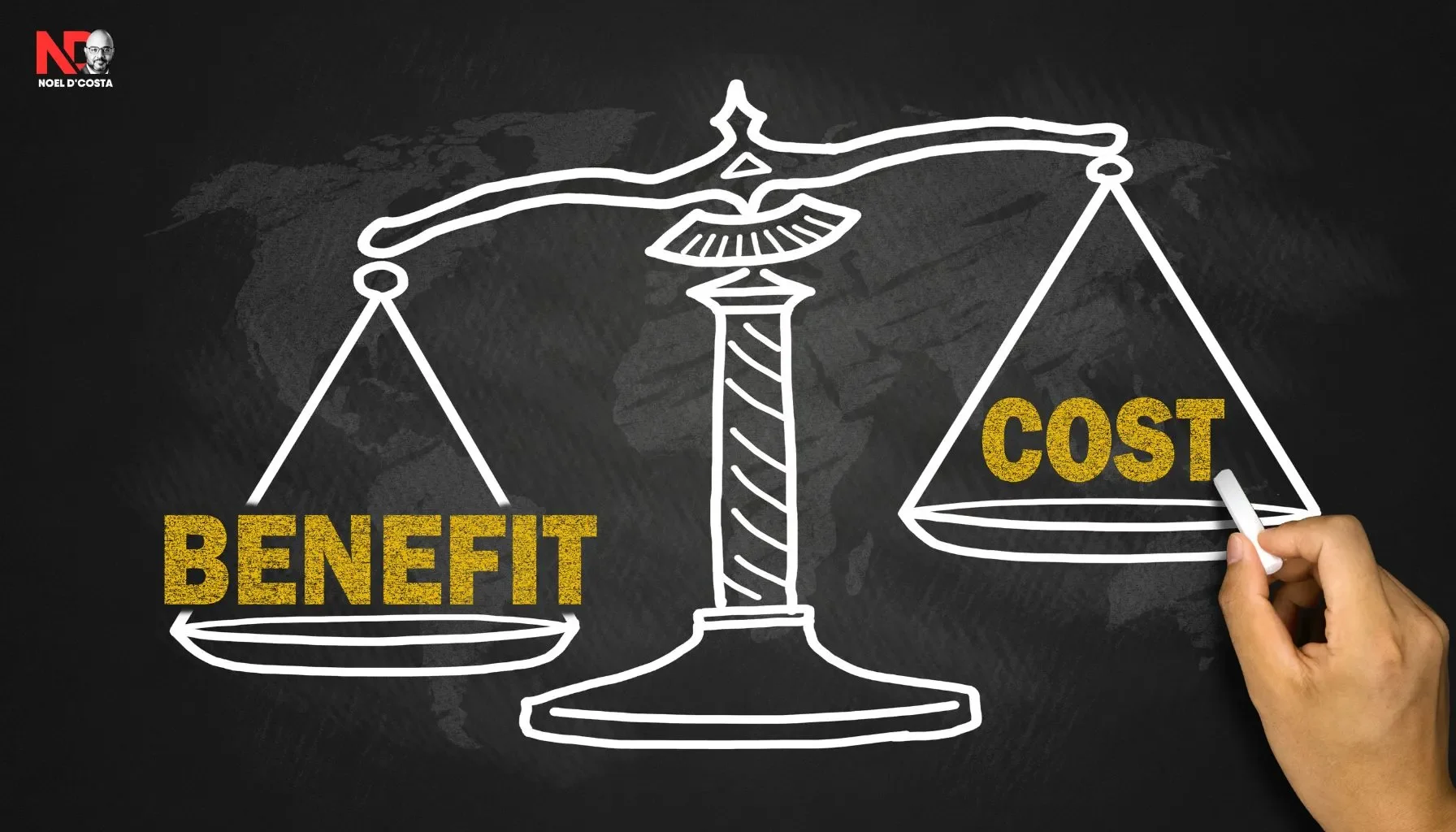
2. SAP Implementation Pricing Models
SAP implementation costs vary based on the implementation strategy and pricing model selected. Some of the Best Implementation Strategies focus on the type of implementation, the size of the team and the processes to be implemented.
Choosing the right model can significantly impact the total costs and the project’s overall potential success. Each option has its own set of benefits and challenges, depending on business requirements and budget flexibility.
A. Fixed-Price Model vs. Time and Material Model
The pricing structure determines how costs are controlled throughout the implementation. Here is a comparison of Fixed Price vs Time and Material pricing models:
| Pricing Model | Key Features | Advantages | Challenges |
|---|---|---|---|
| Fixed-Price Model |
|
|
|
| Time and Material Model |
|
|
|
B. Subscription-Based (SaaS) vs. Perpetual Licensing
The licensing model influences both short-term and long-term financial commitments. Perpetual Licenses are only applicable for SAP On-Premises implementations, which is usually rare. It is usually done by Defense or Public Sector clients.
It is usually understood that Subscription based costs are cheaper compared to Perpetual Licensing. This is not the case – really!
| Aspect | Subscription-Based (SaaS) | Perpetual Licensing |
|---|---|---|
| Initial Cost | Low upfront costs with recurring monthly or annual fees. | High upfront investment for software purchase and implementation. |
| Ownership | No ownership of the software; access is based on subscription. | Full ownership of the software for unlimited use after purchase. |
| Flexibility | Scalable and flexible for growing businesses with dynamic needs. | Fixed features and functionality; additional costs for upgrades. |
| Maintenance and Upgrades | Includes automatic updates, maintenance, and support as part of the subscription. | Requires separate agreements and costs for maintenance and upgrades. |
| Cost Over Time | Recurring fees may exceed the cost of perpetual licensing over the long term. | One-time cost; lower long-term expenses for static requirements. |
| Infrastructure | Hosted on cloud infrastructure managed by the provider. | Requires in-house infrastructure for on-premises deployment. |
| Customization | Limited customization options, depending on the provider. | Full customization to meet specific business needs. |
| Ideal For | Startups and small to medium businesses with limited upfront capital. | Large enterprises with predictable, long-term software requirements. |
C. Breakdown of Direct and Indirect Costs
Understanding the cost structure helps businesses budget costs effectively.
1) Direct Costs:
- Licensing fees, implementation partner charges, customization, and infrastructure setup.
- Easily identifiable and budgeted upfront.
2) Indirect Costs:
- Training, change management, ongoing support, and productivity loss during
transition. - Often underestimated but crucial for long-term success.
D. Pros and Cons of Each Pricing Model
Choosing the right model depends on business priorities and risk tolerance.
| Model | Pros | Cons |
|---|---|---|
| Fixed-Price |
|
|
| Time and Material |
|
|
| Subscription-Based (SaaS) |
|
|
| Perpetual Licensing |
|
|

3. SAP Implementation Costs for Different Business Sizes
SAP costs depend on your business size, complexity, and what you actually need. A small business won’t spend like a global enterprise, but both can run into budget headaches without the right planning. Skip the prep work, and you’ll be dealing with unexpected costs before you know it.
1. Small Businesses: Cost & Key Factors
Small businesses need SAP for efficiency but have tight budgets. The best options? SAP Business One or SAP S/4HANA Cloud—both offer scalable solutions without massive upfront costs.
Estimated Costs:
- $50,000 to $500,000, depending on customization and data migration.
- Cloud-based licensing starts at $500 per user per year—cheaper than on-premise.
Key Considerations:
- Stick to standard features—customization adds unnecessary costs.
- Use cloud solutions to avoid expensive IT infrastructure.
- Train employees effectively—but don’t overspend on excessive consulting fees.
- Prioritize core functions over flashy add-ons that don’t add real value.
2. Mid Sized Enterprises: Cost & Key Factors
Mid-sized businesses need more than just a basic setup. SAP at this level isn’t just about getting the system up and running, it’s about making sure it fits your business needs, integrates with other tools, and can scale as you grow.
But that also means higher costs and a few challenges you’ll need to tackle along the way.
What It Costs
- Most mid-sized businesses spend between $500,000 to $5 million on SAP implementation.
- Costs go up if you need third-party integrations or advanced reporting.
What Makes It Tricky
- Scalability vs. Budget – You want a system that grows with your business, but every extra feature adds to the cost.
- Data Migration Headaches – Moving data from older systems without disrupting operations is a challenge.
- Regulatory Compliance – Some industries need extra security and audit controls, which can drive costs up.
- Cross-Department Adoption – Getting every team on board without slowing down daily work takes planning.
With the right approach, mid-sized companies can get the best of SAP without overspending. The key is to know what you actually need—before the costs go up.
3. Large Corporations: High Costs, High Complexity
For big companies, SAP keeps everything running—teams, systems, compliance, the whole deal. But rolling it out at scale isn’t easy. Costs pile up fast, and getting thousands of employees on board is a challenge. Without a solid plan, things can spiral quickly.
What It Costs
- Full SAP implementations can run between $5 million and $50 million, especially for multi-site deployments.
- On-premise setups demand heavy infrastructure investments, plus ongoing security and maintenance costs.
Why It’s Expensive
- Customization – Big companies have unique processes, and SAP needs to match them. That means extensive system modifications.
- Data Migration – Moving data from multiple legacy systems isn’t quick or cheap.
- Global Training – Employees across multiple locations need proper training to use the system effectively.
- Ongoing Support – Large businesses require continuous system upgrades and maintenance to stay ahead.
Success isn’t just about getting SAP up and running. Every system needs to work together, data must flow seamlessly, and employees have to use it efficiently. Without the right strategy, unexpected costs and operational headaches will follow.
| Category | Small Business (Up to 200 Employees) | Medium Business (200-1000 Employees) | Large Business (1000+ Employees) |
|---|---|---|---|
| Total Cost & Duration | $1 million over 12 months | $7 million over 18 months | $25 million over 24 months |
| Licensing | $300,000 | $2 million | $8 million |
| Implementation & Consulting | $400,000 | $3 million | $10 million |
| Custom Development | $150,000 | $1.5 million | $5 million |
| Data Migration | $100,000 | $800,000 | $3 million |
| Employee Training | $50,000 | $600,000 | $2 million |
| Ongoing Support | $30,000 annually | $500,000 annually | $1.5 million annually |
| Outcome | Improved compliance and reporting accuracy. | Enhanced financial controls and regulatory compliance. | Optimized global financial operations with real-time reporting. |

Other Topics of Interest
4. Hidden Costs to Watch Out For
I mentioned above that SAP implementation costs go way beyond licensing. Many companies underestimate the real expenses and end up paying far more than expected. I’ve seen businesses get so confused when hidden costs show up, causing delays and frustration.
A. Process Changes and Customization
One thing you need to know is that SAP won’t always fit your business processes right out of the box. Companies often realize mid-project that they need modifications:
- Customization can drive costs up fast, especially if workflows are deeply embedded.
- Longer timelines mean more consultant fees.
- Too many customizations make future upgrades expensive and complicated.
B. Third-Party Integrations
SAP doesn’t work alone. It needs to connect with CRMs, e-commerce platforms, and other tools, which means:
- Extra licensing fees for third-party connectors.
- Developer costs to ensure smooth data flow.
- Ongoing maintenance to keep integrations running without issues.
C. Employee Downtime
Switching to SAP is mostly about people adjusting to new ways of working. You can definitely expect:
- Productivity dips as employees learn the system. Every new implementation will have it’s teething problems.
- More IT support requests, increasing operational costs.
- Overtime costs to catch up on missed work.
D. Compliance and Security
Regulated industries can’t afford to overlook compliance. SAP must meet strict security standards, which often means:
- Surprise audit expenses.
- Extra security measures to protect sensitive data.
- Legal fees to ensure compliance with evolving regulations.
E. Upgrades and Scalability
As your business grows, SAP will need to scale. That comes with costs like:
- Additional cloud or server capacity.
- Performance tuning and system upgrades.
- More user licenses as your team expands.
Ignoring these costs now means paying more later. Plan ahead, and your SAP rollout will be smoother—and less expensive—in the long run.

Get more from your SAP Investment with my Expertise
SAP doesn’t have to be complicated. I help businesses get it right.
- ERP & SAP Solutions – Align SAP with your business goals.
- Process Optimization – Cut costs and improve performance.
- License Negotiation – Secure the right SAP licenses at the best price.
Let’s make your SAP investment work for you. Reach out today.

5. Cost-Saving Strategies for SAP Implementation
SAP implementation can drain budgets fast, but smart planning keeps costs in check. I’ve seen companies overspend simply because they didn’t focus on what actually mattered. Here’s how to keep expenses under control without cutting corners.
A. Choose the Right SAP Modules—Not Everything is Necessary
SAP has a massive list of modules, but most businesses don’t need them all. Paying for extra features that don’t align with your operations is just wasted money.
- Map out your core business needs before committing to licenses.
- Start with the essentials and expand as you grow.
- Avoid unnecessary add-ons that complicate things.
- Cloud-based SAP solutions can help scale while keeping costs flexible.
If you’re unsure, my SAP Solution Builder can break down module costs and show what you actually need.
B. Stick to SAP Best Practices—Less Customization, Fewer Headaches
SAP comes with built-in best practices for a reason. Customizing too much can drive up consulting costs, slow implementation, and make upgrades a nightmare.
- Use SAP’s pre-configured industry templates for faster deployment.
- Standardized processes mean lower consulting fees.
- Future upgrades will be smoother without excessive customizations.
I’ve seen businesses double their budget just because they ignored this. Don’t be one of them.
C. Choose the Right Implementation Partner
An experienced SAP partner can make or break your budget. If you do go with the wrong one, and you’ll pay for their mistakes.
- Find a partner with experience in your industry.
- Lock in a fixed-price contract to avoid unexpected costs.
- Make sure they transfer knowledge so you don’t rely on them forever. Get your own team onboard during the implementation!
- Leverage their SAP connections to negotiate better licensing deals.
D. Automate Data Migration and Testing
Data migration is a time sink, and manual testing burns resources fast. Automate what you can to save time and reduce errors.
- Use ETL (Extract, Transform, Load) tools for smooth data migration.
- Automated testing catches issues early, reducing costly rework.
- Less manual effort means fewer mistakes and faster implementation.
E. Manage Scope Creep—Keep the Project Under Control
I’ve seen SAP projects spiral out of control because businesses kept adding new requirements mid-implementation. That’s a one-way ticket to budget overruns.
- Define clear project goals from day one.
- Set strict change control processes—every new request needs justification.
- Regularly track progress to catch cost overruns early.
- Allocate resources efficiently—don’t waste budget on things that won’t add real value.
SAP implementation doesn’t have to break the bank. With smart decisions, you can cut unnecessary costs while maximizing value. I’ve helped companies save millions just by following these simple strategies. The key is planning ahead, sticking to best practices, and keeping control over scope and spending.
6. Comparing SAP Implementation Cost with Other ERPs
SAP vs. Oracle Cloud: Which One Actually Costs More?
SAP and Oracle Cloud both run big businesses, but they don’t come cheap. The real question is not just cost—it’s which one fits your business without draining your budget.
1. Licensing Costs
SAP lets you pick what you need instead of paying for features you won’t use.
- SAP offers options: Pay-as-you-go (subscription) or a one-time license.
- Oracle Cloud bundles everything together. Sounds convenient, but you might end up paying for stuff you don’t need.
- If you want more control over costs, SAP works. If you prefer a one-size-fits-all deal, Oracle Cloud is easier.
2. Implementation Costs
SAP takes longer to set up but gives you more customization.
- Customization = higher costs. If your business has unique processes, SAP lets you fine-tune things—but at a price.
- Oracle Cloud is faster to launch since it comes with pre-set templates. Less setup time, but not as flexible.
- If your business needs deep customization, SAP wins. If you just want to get up and running quickly, Oracle Cloud might be better.
3. Long-Term Costs
Both platforms charge for maintenance, updates, and support—so don’t assume the spending stops after launch.
- SAP’s pricing scales with you—start small, add more later.
- Oracle Cloud includes updates, but adding new features costs extra.
- If you want to tweak things as your business grows, SAP is better. If you just want a set-it-and-forget-it model, Oracle Cloud is easier.
SAP is more flexible but expensive upfront. Oracle Cloud is faster but might lock you into a one-size-fits-all approach. Which one’s better? That depends on whether you want full control or just a simple setup.
| Criteria | SAP | Oracle Cloud | Better for Long Run |
|---|---|---|---|
| Licensing Costs |
|
|
SAP — More flexibility in scaling costs based on business growth. |
| Implementation Expenses |
|
|
SAP — Better customization options that adapt to evolving business needs. |
| Long-Term Costs |
|
|
SAP — Offers greater control and flexibility over the long term. |
My Recommendation
Picking the right ERP affects everything—operations, costs, and how well your business runs. I’ve worked on SAP and Oracle Cloud implementations, and SAP is the better choice for companies that need flexibility, customization, and long-term control over costs.
I supported Aviation for a long time. I know two well-established airlines, one had Oracle and the other SAP. The Oracle airline had 4,500 supporting their implementation, why the airline with SAP, had 38!
Why SAP?
- You only pay for what you need. SAP’s modular pricing lets you start small and expand when needed.
- More control over costs. Oracle Cloud forces bundled features, while SAP gives you options.
- Customizable to fit complex businesses. If you have unique processes, SAP adapts better.
- Stronger industry-specific solutions. Works well for companies that need tailored workflows.
When Does Oracle Cloud Make Sense?
- Faster setup. Pre-built solutions mean quicker deployment.
- Best for standard business processes. Less need for customization.
- Watch for hidden costs. Bundled pricing can include features you don’t need.
Final Thoughts
SAP gives you control, flexibility, and room to grow. A well-planned implementation with the right partner helps keep costs in check while ensuring a smooth rollout.
SAP vs. Microsoft Dynamics: The Real Cost Breakdown
I’ve worked with companies running both SAP and Microsoft Dynamics. One mid-sized business picked Microsoft Dynamics because it seemed cheaper upfront. A year later, they were stuck with expensive add-ons and workarounds to keep up with their growth. Another company went all in with SAP, paid more upfront, but never had to worry about outgrowing the system.
1. Upfront Costs: Looks Cheap vs. Actually Scales
- Microsoft Dynamics starts cheap. It’s why a lot of companies go for it.
- SAP costs more upfront, but you don’t have to bolt on extra pieces every time your business expands.
2. Customization & Integration: Works with What?
- SAP can be molded to fit complex operations, but deep customizations aren’t cheap.
- Microsoft Dynamics is easy if you’re already in the Microsoft world (Office 365, Azure, etc.)—but if you need third-party tools, integrations get messy fast.
3. Growth Costs: Pay Now vs. Pay More Later
- SAP scales naturally—big companies use it for a reason.
- Microsoft Dynamics starts small but racks up costs as you grow—more licenses, more modules, more headaches.
4. Hidden Costs: The Stuff No One Talks About
- Training – SAP has a learning curve, but once you’re in, you’re set.
- Upgrades – Microsoft Dynamics changes fast. If you don’t upgrade, you fall behind.
- Customizations – Every tweak to Dynamics means future maintenance costs.
So, What’s the Move?
- Microsoft Dynamics works if you need something simple and don’t mind upgrading often.
- SAP is for businesses that want a rock-solid ERP that doesn’t need fixing every two years.
I’ve seen companies regret choosing the “cheaper” option when the add-ons start piling up. Short-term savings don’t always mean long-term value.
| Criteria | SAP | Microsoft Dynamics |
|---|---|---|
| Initial Investment |
|
|
| Customization and Integration |
|
|
Topics to Support Your Implementation

7. Practical Case Studies of SAP Implementation Costs
Understanding the cost of SAP implementation becomes easier when looking at real-world cases. Businesses across industries have faced challenges, managed costs, and optimized their implementations for better returns. Examining these examples helps uncover insights that can guide future SAP projects.
A. Successful Implementations with Cost Breakdown
I’ve done a lot of ERP Implementations. Several organizations have successfully implemented SAP, balancing costs while achieving operational improvements.
| Category | Small Business (Up to 200 employees) |
Medium Business (200-1000 employees) |
Large Business (1000+ employees) |
|---|---|---|---|
| Total Cost & Duration | $500,000 over 9 months | $3.5 million over 18 months | $15 million over 24 months |
| Licensing | $150,000 | $800,000 | $5 million |
| Implementation & Consulting | $200,000 | $1.2 million | $6 million |
| Custom Development | $50,000 | $600,000 | $2.5 million |
| Data Migration | $50,000 | $300,000 | $1.5 million |
| Employee Training | $30,000 | $400,000 | $2 million |
| Ongoing Support | $20,000 annually | $200,000 annually | $800,000 annually |
| Outcome | Improved production planning and cost tracking. | Increased process efficiency by 25% and reduced manual workloads. | Streamlined global operations and cost reductions across the supply chain. |
| Category | Small Business (Up to 50 stores) |
Medium Business (50-200 stores) |
Large Business (200+ stores) |
|---|---|---|---|
| Total Cost & Duration | $750,000 over 12 months | $5 million over 18 months | $20 million over 24 months |
| Licensing | $200,000 | $1.5 million | $7 million |
| Implementation & Consulting | $300,000 | $2 million | $8 million |
| Custom Development | $100,000 | $1 million | $3 million |
| Data Migration | $80,000 | $500,000 | $2 million |
| Employee Training | $50,000 | $600,000 | $3 million |
| Ongoing Support | $20,000 annually | $400,000 annually | $1.2 million annually |
| Outcome | Better inventory tracking and customer management. | Improved inventory accuracy, leading to fewer stock shortages. | Optimized supply chain and enhanced customer experience across all locations. |
| Category | Small Business (Up to 200 employees) |
Medium Business (200-1000 employees) |
Large Business (1000+ employees) |
|---|---|---|---|
| Total Cost & Duration | $1 million over 12 months | $7 million over 18 months | $25 million over 24 months |
| Licensing | $300,000 | $2 million | $8 million |
| Implementation & Consulting | $400,000 | $3 million | $10 million |
| Custom Development | $150,000 | $1.5 million | $5 million |
| Data Migration | $100,000 | $800,000 | $3 million |
| Employee Training | $50,000 | $600,000 | $2 million |
| Ongoing Support | $30,000 annually | $500,000 annually | $1.5 million annually |
| Outcome | Improved compliance and reporting accuracy. | Enhanced financial controls and regulatory compliance. | Optimized global financial operations with real-time reporting. |

Lessons Learned for Cost-Effective SAP Deployment
I’ve seen companies spend money on SAP projects because they didn’t plan properly. And I’ve seen others roll out SAP with minimal waste, no major overruns, and a system that actually worked. The difference is that they avoided the usual traps.
1. Plan Like It’s Life or Death
A vague SAP plan is a guaranteed road to hell! One company skipped the blueprint phase, thinking they’d figure things out on the go. They paid for it—twice. Every delay meant higher consulting fees, and every “small” change came with a big price tag.
- Lock in your scope early.
- Define requirements in painful detail before you sign off.
- Know what you’re customizing before you start (or watch your budget explode).
2. Training: Don’t Cheap Out
Some companies try to save money by cutting training. Guess what? They end up paying more later when employees don’t know how to use the system and flood IT with support requests.
- Train before go-live, not after.
- Pick internal “super users” who can train others.
- If people don’t understand SAP, they’ll work around it, breaking processes and causing errors.
3. Stick to Standard Processes
SAP isn’t your old legacy system. Trying to force it to work like one is expensive and pointless.
- A company I worked with tried heavily customizing SAP to fit their old processes. Millions later, they scrapped the customizations and went back to SAP’s standard workflows.
- SAP best practices exist for a reason—use them.
4. The Right Partner Saves You Millions
I’ve worked with top-tier SAP partners and ones that shouldn’t even be in business. The right partner won’t just install SAP—they’ll tell you what to avoid so you don’t waste money.
- Pick a partner who knows your industry—not just SAP.
- Go for fixed-price contracts where possible. Open-ended consulting fees are a black hole.
- Ask about their past clients. If they struggle to name a single successful project, run.
5. Watch Costs Like a Hawk
SAP costs spiral fast if no one’s paying attention. One company tracked expenses weekly and stayed on budget. Another checked costs only when invoices came—by then, it was too late.
- Set a budget and stick to it.
- Monitor costs monthly, not quarterly.
- Put a stop to scope creep before it happens.
Final Thought
SAP isn’t cheap, but bad decisions make it way more expensive. The companies that succeed plan properly, avoid unnecessary customizations, train people well, and don’t throw money at every problem. Get those right, and your SAP rollout won’t be another horror story.
Challenges Faced and How They Were Overcome
SAP implementations rarely go without hurdles. Common challenges include budget overruns, resistance to change, and technical issues.
| Challenges Faced | Description | Solution |
|---|---|---|
| Scope Creep | Expanding requirements mid-project added unexpected costs. | Strict project governance and clear change control processes. |
| Data Quality Issues | Poor legacy data slowed migration. | Early data cleansing efforts and automated validation tools. |
| User Adoption Resistance | Employees struggled with the transition. | Comprehensive training programs and phased rollouts to ease adoption. |
8. How to Budget for an SAP Implementation Project
Budgeting for an SAP implementation requires careful planning and allocation of resources to avoid unexpected financial strain. A well-structured budget ensures a smooth rollout while keeping costs under control.
Breaking down the project into key phases, planning for contingencies, and using the right tools can help businesses stay on track.
A. Key Budgeting Phases and Cost Allocation
SAP implementation typically follows a phased approach, and each phase comes with its own financial requirements. Allocating the right budget to each stage helps prevent cost overruns.
| Phase | Budget Allocation | Key Activities |
|---|---|---|
| Planning and Assessment | 10-15% of total budget |
|
| Implementation and Customization | 40-50% of total budget |
|
| Data Migration and Integration | 15-20% of total budget |
|
| Training and Change Management | 10-15% of total budget |
|
| Post-Go-Live Support and Maintenance | 10-15% of total budget |
|
B. Creating a Cost Contingency Plan
SAP projects never go exactly as planned. I’ve seen companies budget to the cent, only to get blindsided by extra costs they didn’t see coming. That’s why a contingency budget is a must.
How much should you set aside?
Plan for 10-20% of your total project cost—because surprises will happen.
What can go wrong (and cost more)?
- Customization creep – “We don’t need many changes” turns into a long list of tweaks.
- Data migration nightmares – Cleaning and moving data always takes longer than expected.
- Training gaps – If users struggle, expect extra training costs to fix adoption issues.
- Hidden integrations – That third-party tool nobody thought about? Now you need it, and it’s expensive.
A contingency budget isn’t wasted money—it’s your safety net. Without one, every roadblock turns into a crisis.
C. Tools and Templates for Effective Budgeting
SAP implementation costs can get out of control fast if you don’t track them properly. The best-run projects use tools to keep spending in check.
- Project Budget Templates – Track every cost across different phases. The companies that don’t? They end up asking “Where did all the money go?”
- SAP Implementation Cost Calculators – Estimate costs upfront based on project size and complexity. If you’re planning an SAP rollout, check out my ERP Implementation Cost Calculator and SAP Implementation Cost Calculator—they’ll save you from budget surprises.
- Financial Management Software – Platforms like SAP S/4HANA Finance let you track budgets in real time and flag cost overruns before they spiral.
- Live Dashboards & Reports – The best way to spot financial leaks before they drain your budget.
I’ve seen companies succeed with SAP because they planned for the unexpected. Those that didn’t? They learned the hard way.
You may also Read...

Conclusion
SAP projects can burn through cash fast if you don’t stay ahead of the costs. I’ve seen companies start with one budget and end up paying double. The difference? Planning, prioritization, and smart decision-making.
Where the Money Goes (and How to Control It)
- Licensing fees are just the start—post-go-live support, training, and integrations pile up fast.
- Fixed-price vs. time-and-material contracts? One gives cost certainty, the other flexibility. Pick wrong, and you’ll regret it.
- Customizations? Keep them minimal. The more you tweak SAP, the more you’ll pay for upgrades later.
Hidden Costs You Can’t Ignore
- That “quick integration” with your CRM? Not so quick or cheap.
- Compliance audits, security upgrades—no one budgets for them, but they’re inevitable.
- Employees adjusting to SAP means slowdowns and lost productivity.
A 10-20% contingency budget isn’t a luxury—it’s survival. Every SAP project has unexpected costs. The companies that plan for them? They stay on track.
Saving Money Without Cutting Corners
- Use SAP best practices instead of reinventing the wheel.
- Automate data migration—manual work slows projects down and inflates costs.
- Invest in training upfront so you don’t end up paying for endless support later.
Tracking every dollar, reviewing progress constantly, and making decisions based on business goals—that’s how you keep SAP from becoming a runaway cost nightmare.
SAP is a big investment, but done right, it pays off. What’s been your experience? Let’s talk.
Frequently Asked Questions
1. What are the key factors that affect SAP implementation costs?
Several factors influence SAP implementation costs. For example:
- Licensing fees: A manufacturing company may need modules for supply chain management, which increases costs compared to a service-based business requiring fewer modules.
- Customization needs: A retail chain integrating SAP with its point-of-sale systems may face higher development costs.
- Data migration: A financial institution migrating decades of customer data from legacy systems may require extensive data cleansing and mapping efforts.
- Training: A large enterprise with thousands of employees might invest heavily in change management to ensure smooth adoption.
- Cloud vs. on-premise: A small business opting for cloud deployment may have lower upfront costs but face recurring subscription fees. Visit https://honeydew-sheep-964865.hostingersite.com for more information.
2. How can businesses avoid unexpected SAP implementation costs?
Businesses can reduce surprises by focusing on key areas such as:
- Project goals: A logistics company clearly defining its tracking and reporting needs before implementation can prevent costly changes later.
- Regular tracking: A healthcare provider conducting frequent progress reviews can identify potential delays or extra customization needs early.
- Contingency budget: A telecom company setting aside 15% of its budget helped manage unexpected data integration issues during implementation. Visit https://honeydew-sheep-964865.hostingersite.com for more information.
3. Is a fixed-price model better than a time and material model for SAP implementation?
Choosing the right pricing model depends on the complexity, scope, and flexibility required for your ERP implementation.
Fixed-Price Model: This is best suited for projects with well-defined requirements and minimal expected changes. For example, a government agency with clearly outlined procurement processes and regulatory compliance needs can benefit from a fixed-price contract, ensuring predictable costs and a controlled timeline. The downside is limited flexibility—any changes beyond the agreed scope may result in additional charges.
Time and Material Model: This model is ideal for projects with evolving requirements or where the full scope isn’t entirely known upfront. A retail business that experiences frequent changes, such as adapting to seasonal sales trends or integrating with new e-commerce platforms, may find a time and material model more suitable. It offers flexibility to adjust resources and project scope as needs evolve but requires careful monitoring to avoid budget overruns.
Ultimately, businesses with a fixed scope and tight budgets may prefer the fixed-price approach, while those anticipating changes and requiring agility might opt for the time and material model. Proper project planning and clear expectations can help ensure the chosen model aligns with business goals.
Visit https://honeydew-sheep-964865.hostingersite.com for more information.
4. What are the most common hidden costs in SAP projects?
Hidden costs can add up quickly during ERP implementation. Some real-world examples include:
- Customization: A pharmaceutical company adapting SAP to meet strict regulatory requirements faced unexpected development costs.
- Compliance Costs: A financial firm had to invest heavily in additional security measures to comply with evolving data privacy laws.
- Integration Challenges: A logistics company required extra middleware solutions to integrate SAP with its existing fleet management software.
- Productivity Loss: A large food distributor experienced temporary slowdowns as employees adjusted to the new system.
Planning for these hidden expenses helps businesses stay within budget and avoid surprises. Visit my website for more insights.
5. How can businesses get the most value from their SAP investment?
Some practical ways to achieve better value include:
- Selecting the right modules: A retail business focusing on inventory management modules instead of a full ERP suite to control costs.
- Using standard best practices: A manufacturing firm adopting SAP’s standard workflows rather than building complex custom processes.
- Investing in training: A multinational corporation providing continuous user training to ensure employees fully understand the system’s capabilities.
- Automation: A transportation company automating data migration to reduce errors and avoid costly manual corrections.
- Progress reviews: A financial services provider conducting monthly assessments to align system performance with business goals. Visit https://honeydew-sheep-964865.hostingersite.com for more information.
6. What are the benchmark costs for ERP implementation across different industries?
ERP costs vary based on company size and complexity. On average:
- Small businesses: Spend $150,000 to $750,000, focusing on core features with minimal customization.
- Mid-sized enterprises: Invest $1 million to $5 million, adding more modules and integrations.
- Large corporations: Allocate $10 million or more, covering global operations and compliance needs.
Different industries also impact costs. Manufacturing companies often spend more due to supply chain complexities, while service-based businesses may allocate more to analytics and reporting.
For a detailed breakdown, visit my website.
7. What does Gartner say about ERP implementation costs?
Gartner estimates that ERP implementation costs can range from 1% to 5% of a company’s annual revenue, depending on the project’s complexity. Key cost areas include:
- Licensing: Cloud solutions offer flexible pricing, while on-premise requires larger upfront investment.
- Implementation: Consulting and project management can drive up costs, especially for complex rollouts.
- Customization: Adapting the system to business needs and integrating with existing tools adds expenses.
- Training: Proper training is essential to maximize ROI and ensure smooth adoption.
- Support: Ongoing maintenance and updates contribute to long-term costs.
Careful planning and clear scope management can help avoid cost overruns. Visit my website for more insights.
8. Can ERP implementation costs be capitalized?
Yes, some ERP costs can be capitalized if they bring long-term value to the business. These typically include:
- Software purchase: Licensing fees and initial software acquisition.
- Customization: Adjustments made to align the system with business needs.
- Implementation services: Consulting costs that contribute to system development.
- Data migration: Transferring critical business data to the new system.
However, some costs must be expensed immediately, such as:
- Training: Costs for employee learning before or after go-live.
- Post-go-live support: Maintenance and ongoing system support.
- Process reengineering: Redesigning workflows not directly tied to ERP setup.
For accurate classification, businesses should follow accounting standards like IFRS or GAAP. Visit my website for more insights.
9. What is the typical cost breakdown for ERP implementation?
From my experience, ERP costs go beyond just buying the software. Here’s a quick breakdown of where your budget goes:
- Licensing (20-30%) – Covers software modules and user access. Manufacturing firms often pay more for production planning, while smaller businesses stick to core features.
- Implementation (30-50%) – Bringing in experts for setup and process alignment is essential. Retail businesses with multiple locations usually need extensive consulting.
- Customization (10-20%) – Tailoring the system to fit unique processes can add costs, especially in industries like finance with strict compliance needs.
- Data Migration (10-15%) – Cleaning and transferring old data takes time, particularly for businesses with large datasets like healthcare.
- Training (10-15%) – Proper training prevents costly mistakes and ensures a smooth transition.
- Ongoing Support (5-10%) – Regular updates and support are necessary to avoid performance issues down the line.
Knowing these costs upfront helps businesses budget smarter. Visit my website to learn more.
10. Is there a tool to estimate SAP implementation costs?
Yes, you can use the SAP Implementation Cost Calculator to estimate your SAP project expenses. It considers key factors such as licensing, consulting, customization, data migration, and ongoing support. I’ve seen businesses use it to set realistic budgets and avoid unexpected costs.
For a broader view, the ERP Implementation Cost Calculator helps compare SAP with other ERP solutions, providing insights tailored to different business sizes and industries.
These tools can help you:
- Understand costs based on your business size and deployment choice (cloud vs. on-premise).
- Plan for key areas like customization, training, and support.
- Identify hidden costs that could impact your budget.
Using these calculators can help align your financial expectations with your project goals. Visit my website for more details.
11. Can I get SAP for free?
SAP doesn’t provide its full enterprise solutions for free, but there are several ways to explore and learn SAP without any cost.
- SAP Free Trial Versions: Businesses and individuals can try limited-time trials of cloud solutions like SAP S/4HANA Cloud and SAP Business One, which allow access to core features before making a purchase decision.
- SAP Learning Hub – Free Edition: This platform offers free introductory courses and training materials, making it a great starting point for those looking to familiarize themselves with SAP systems.
- SAP Community Edition: Products like SAP HANA Express offer free developer versions, providing hands-on experience for non-commercial use.
- University Alliances: Students can access SAP software through educational institutions partnered with SAP, offering hands-on learning as part of their coursework.
While these free options provide valuable insights and practical exposure, a full-scale SAP implementation for business operations requires purchasing licenses and investing in consulting and support services.
For more details, visit my website.
12. Is SAP owned by Oracle?
No, SAP is not owned by Oracle. SAP SE is an independent software company headquartered in Walldorf, Germany. It was founded in 1972 and is one of the world’s leading providers of enterprise resource planning (ERP) software.
On the other hand, Oracle Corporation, based in the United States, is a separate company and a direct competitor to SAP in the ERP and cloud computing market. Oracle offers its own ERP solutions, including Oracle Cloud ERP, which competes with SAP’s S/4HANA.
While both companies provide ERP solutions to businesses globally, they operate independently with different product offerings, strategies, and market focuses. Visit https://honeydew-sheep-964865.hostingersite.com for more information.
13. Which is cheaper SAP or Oracle?
From what I’ve seen, the cost of SAP versus Oracle depends on your business needs and complexity.
Upfront costs: Oracle usually comes in cheaper with bundled pricing that covers core functionalities, making it a good option for businesses looking to get started quickly. SAP, on the other hand, offers modular pricing, which allows flexibility but often means a higher initial investment.
Implementation costs: SAP tends to be more expensive due to its customization capabilities. If your business has unique processes, SAP can accommodate them—but it comes at a cost. Oracle’s standard configurations often result in lower implementation expenses and shorter timelines.
Long-term costs: SAP may have higher ongoing expenses, but it provides strong value for businesses with complex needs that require scalability and deep integration. Oracle can be more cost-effective for businesses with simpler operations but may require additional spending if extensive customizations are needed later.
If your business needs a highly flexible and scalable system, SAP can be worth the investment. But for those looking for a straightforward, cost-effective solution, Oracle might be the better fit. For more insights, visit my website.
14. Why is SAP so expensive?
From what I’ve seen, SAP’s cost comes from its ability to handle complex business processes across finance, supply chain, and HR. It’s not just software—it’s a complete system that integrates every part of a business, which naturally drives up costs.
Customization plays a big role. Many companies want SAP to fit their processes instead of adapting to standard solutions, which adds to development and implementation costs. I’ve seen businesses underestimate how much customization can stretch their budgets.
Licensing is another major factor. SAP’s modular pricing allows businesses to start small, but as operations expand, costs can increase with additional users and features. Cloud subscriptions may look affordable at first, but recurring fees can build up over time.
Implementation requires experienced consultants, and hiring the right team—whether in-house or through partners—adds to the overall investment. Then there’s ongoing maintenance, including updates and support, which businesses often overlook in their initial planning.
While SAP is expensive, companies that plan well, choose the right modules, and invest in proper training get real value from it.
15. Is SAP outdated now?
No, SAP is not outdated. In fact, it continues to evolve to meet modern business needs. SAP has shifted its focus to cloud-based solutions with SAP S/4HANA, offering faster processing, real-time analytics, and AI-driven insights. This cloud-first approach keeps SAP relevant for businesses looking to stay competitive in today’s digital landscape.
From my experience, businesses still rely on SAP because of its deep industry-specific capabilities and integration options. Many large enterprises continue to invest in SAP for its ability to scale and adapt to complex operational needs.
That said, companies using older SAP versions like SAP ECC may find them less aligned with modern digital strategies. SAP has announced an end-of-support timeline for ECC, pushing businesses to transition to the cloud.
SAP remains a leading ERP choice, especially for businesses needing comprehensive solutions and future-proof scalability.
Visit https://honeydew-sheep-964865.hostingersite.com for more information.
AI Tools to Support Your SAP Implementation
Take the stress out of your SAP implementation with AI tools that work smarter, not harder. These tools help with everything—from planning and migrating data to setting up the system and keeping things running smoothly after go-live.
They automate repetitive tasks, give you clear insights, and make sure everything connects the way it should. If you want to save time, reduce mistakes, and get your SAP system working for you faster, these AI tools are here to help every step of the way.

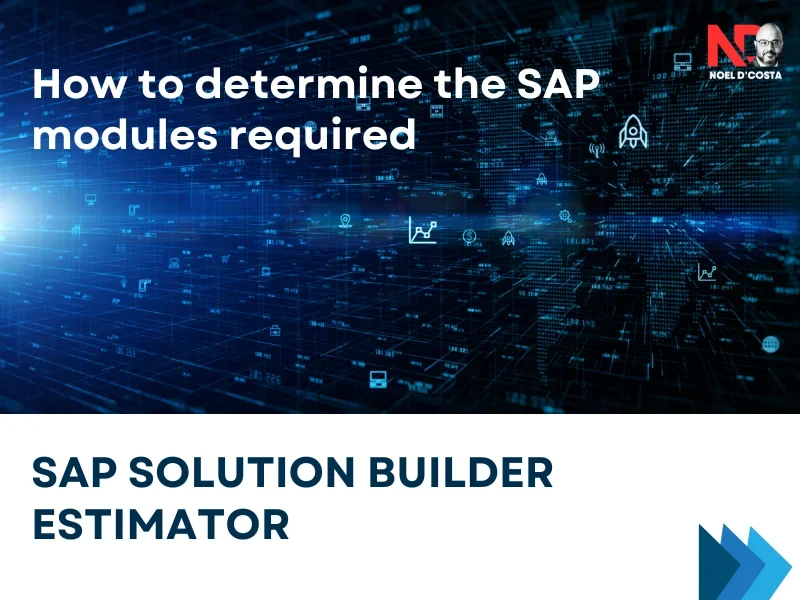
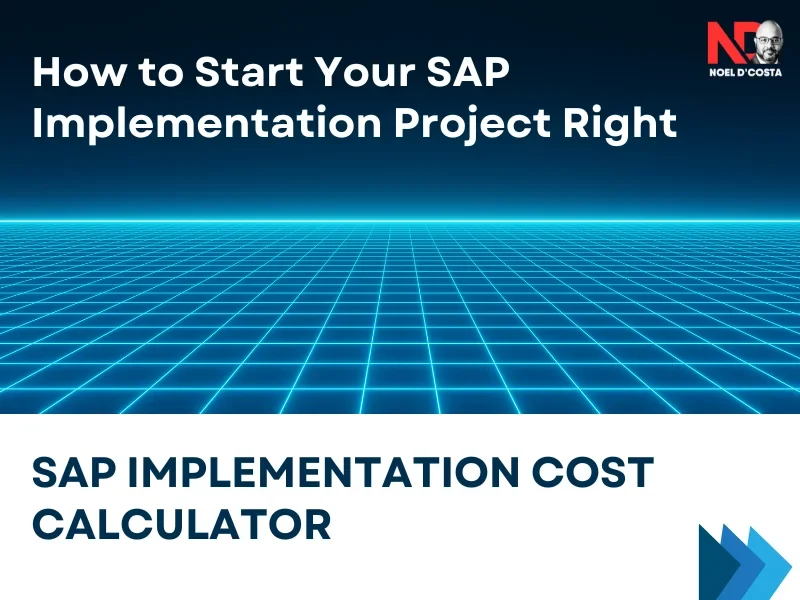
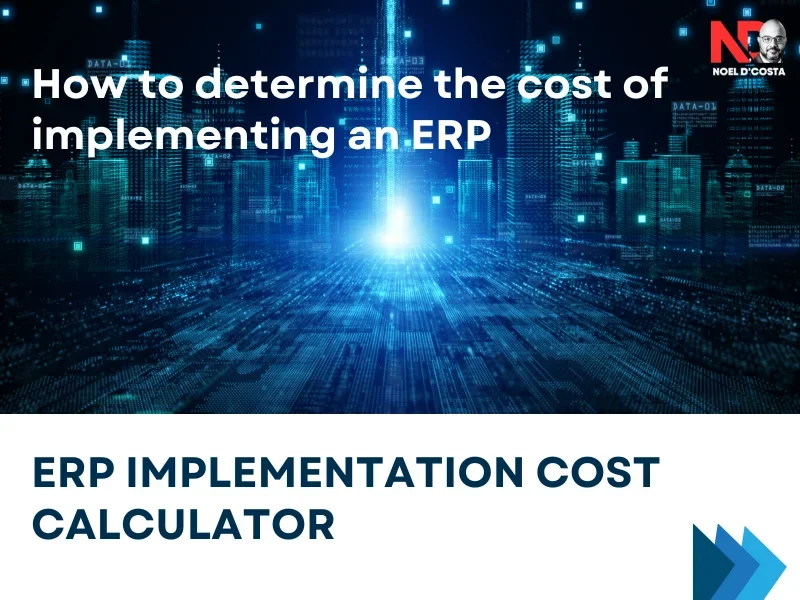
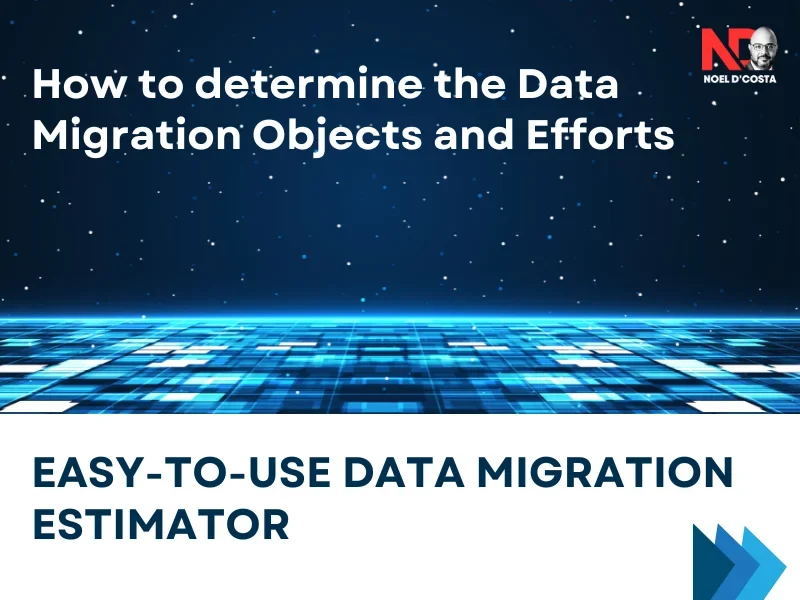

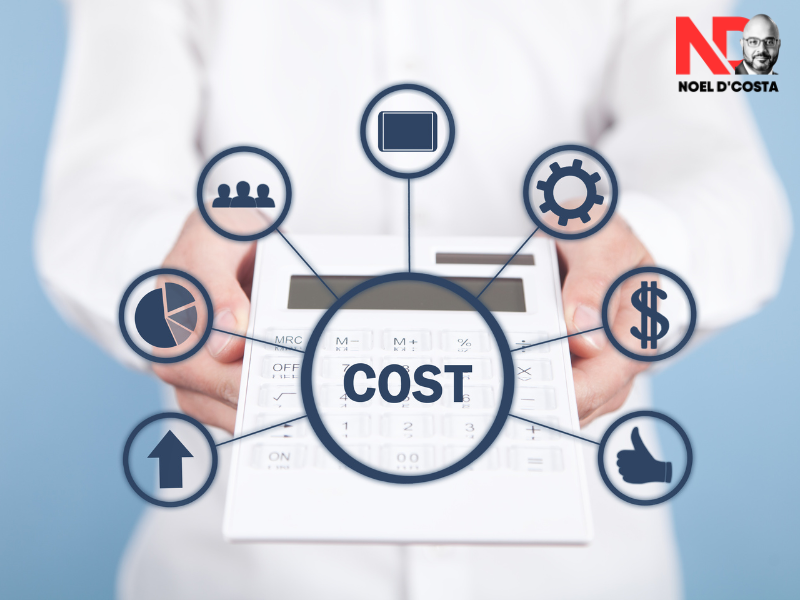


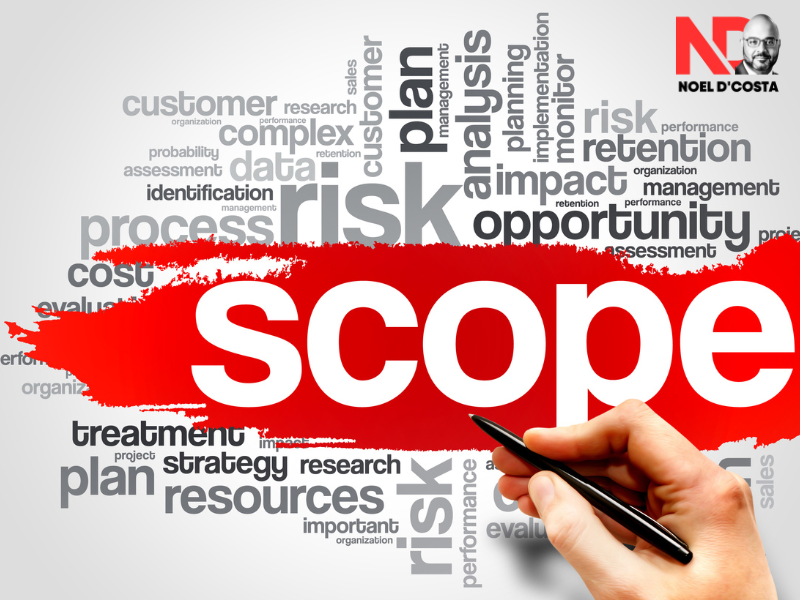
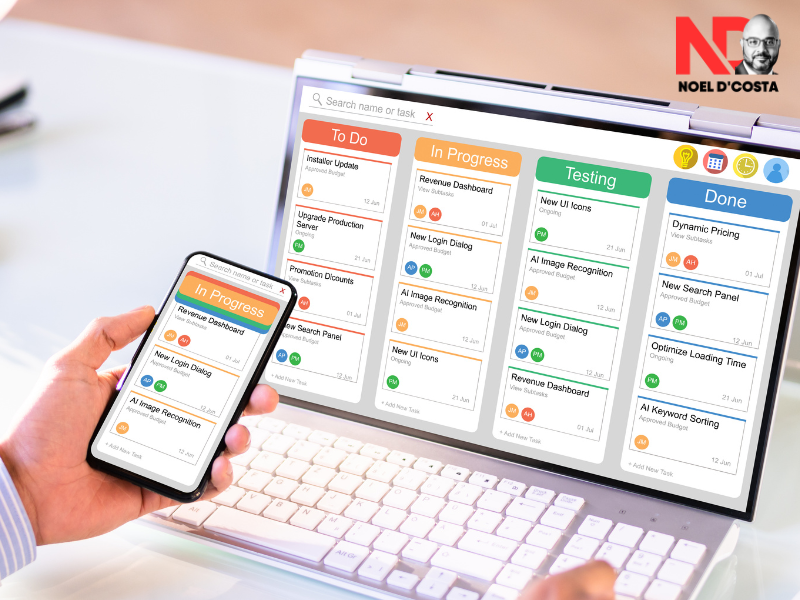
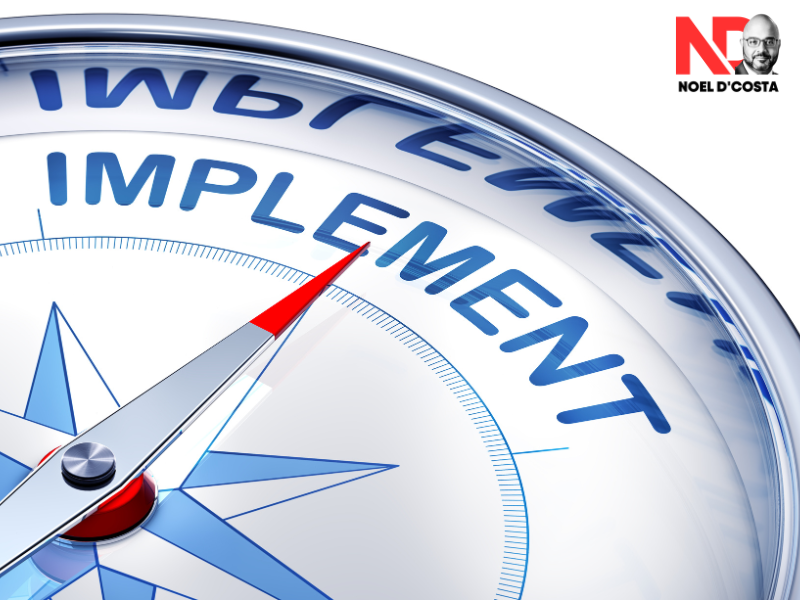

4 Responses
This breakdown of SAP implementation costs is incredibly insightful! A must-read for businesses planning their ERP journey. Thanks for sharing these valuable insights! https://saveplus.ae/